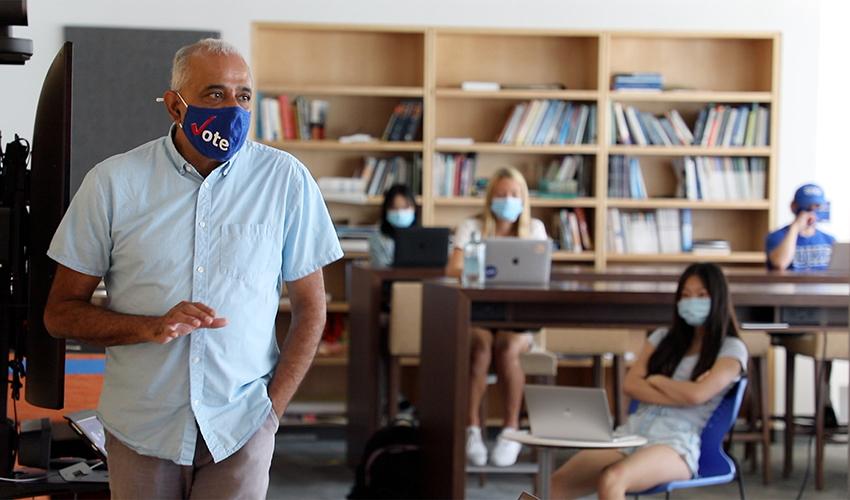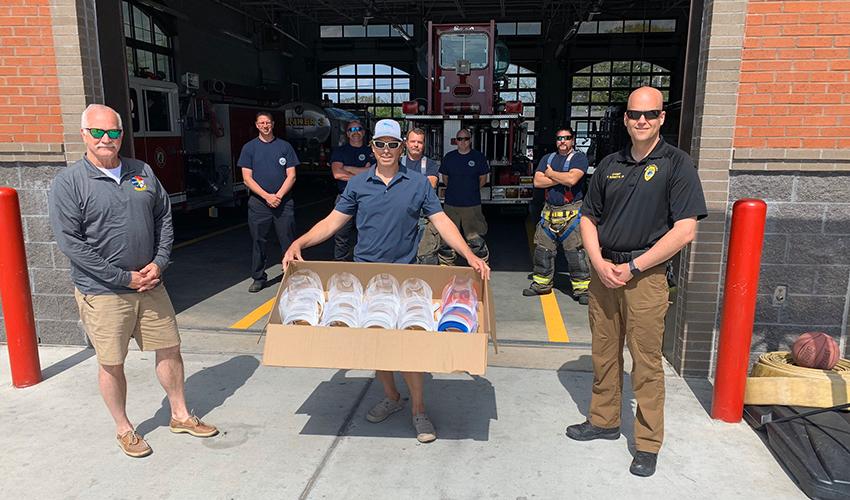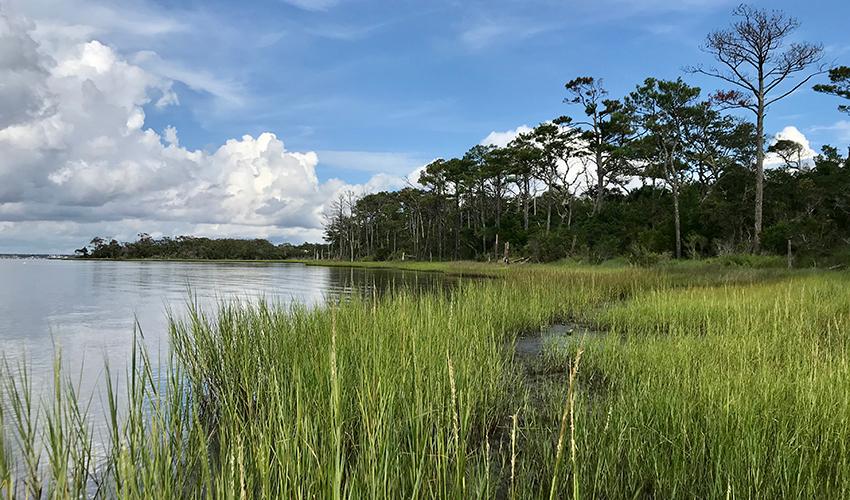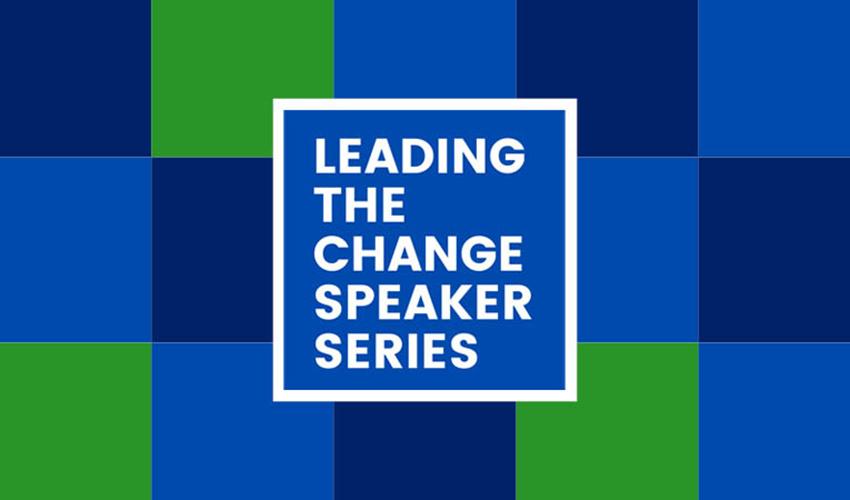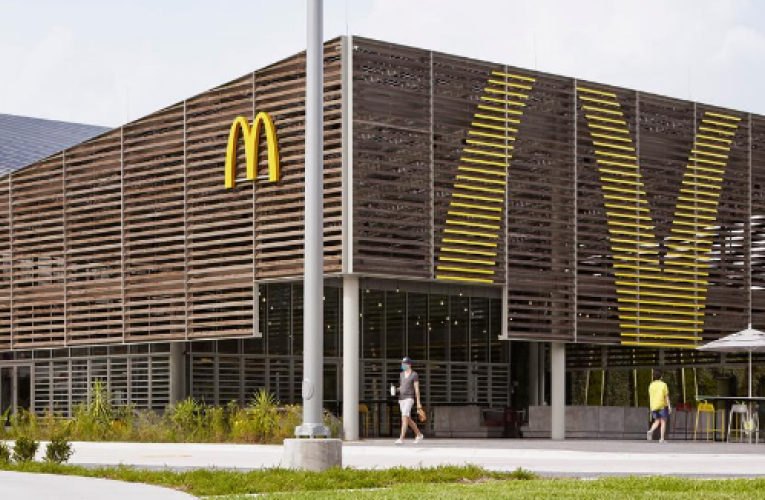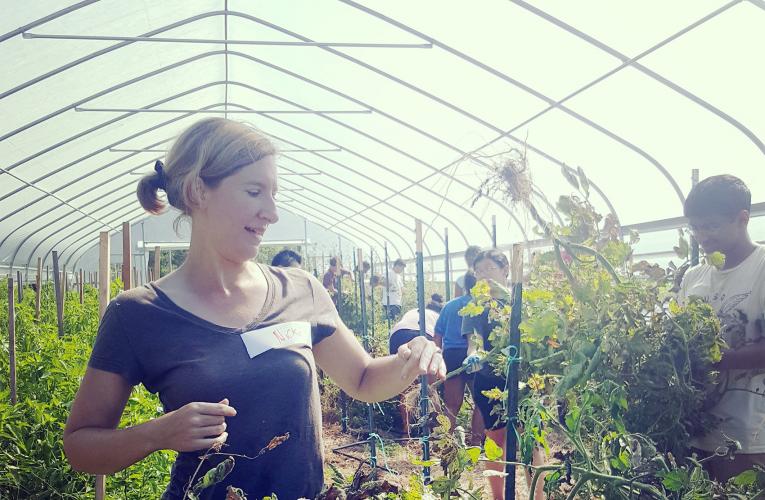Stepping Up for First Responders
Most days, the 3D printer at the Marine Robotics and Remote Sensing (MaRRS) Lab at the Duke Marine Lab is busy making parts for the lab’s fleet of research and mapping drones.
But earlier this year, as COVID transmission rates started to surge in North Carolina, lead engineer Julian Dale also began using it to make face shields for first responders and healthcare providers in the Marine Lab’s home community of Beaufort, N.C.
The shields, which are built using files Dale downloaded from an open-source community website, have been donated to local fire and police departments, EMS crews, pediatricians, pulmonologists and hospital staff.
Other labs at the Nicholas School have also responded to calls to help shore up local supplies of protective gear.
Staff members in the labs of Heather Stapleton, Joel Meyer, Lee Ferguson and Nicolas Cassar have donated boxes of face masks, non-latex gloves and other gear to Duke Medical Center. Matt Ruis, a fifth-year PhD student in Stapleton’s lab, helped coordinate the donation. His wife is an Intensive Care Unit nurse at the hospital.
WILD Program Targets Emerging Water Leaders
Up to 15 full scholarships a year are being offered to a new Nicholas School executive education program designed to equip early- to mid-career water managers with the skills needed to forge innovative solutions to the challenges faced by water and wastewater utilities today.
Managers accepted into the year-long Water Innovation and Leadership Development (WILD) program, which starts in February, will be introduced to new approaches and resources for dealing with issues ranging from funding shortfalls and aging infrastructure, to climate impacts and uncertain population trends.
“These types of issues present challenges for nearly all water service providers but they disproportionately affect small- to mid-sized systems that serve marginalized and vulnerable communities,” said Martin Doyle, professor of river systems science and policy, who will lead WILD.
“Thanks to generous support from our funders, we have been able to remove a financial barrier that might otherwise prevent emerging leaders at these systems from taking advantage of our program this year or when we offer it again in 2022 and 2023,” he said.
Annual enrollment will be capped at 15 to optimize the learning environment and ensure that every participant receives full funding to cover program tuition, valued at $14,000, and travel costs to two training workshops on Duke’s campus.
To accommodate participants’ work schedules, most of WILD’s curriculum will be taught via online evening sessions. Trained leadership coaches will facilitate the sessions, but there will also be a heavy emphasis placed on team-based and peer-to-peer learning.
“The idea is to help emerging leaders build a network of peers they can brainstorm with and seek advice from, even long after the program ends,” said Doyle.
Wetland Center Preps for Major Expansion
The Duke University Wetland Center marked its 30th anniversary this year by kicking off the largest expansion of research, teaching and outreach programs in its history.
Plans for the multi-year expansion include opening a Wetland Center branch at the Duke University Marine Lab in Beaufort, N.C., and developing new courses on wetland and coastal restoration, coastal resilience and carbon neutrality for students at the Marine Lab and on Duke’s Durham campus, said Director Curtis J. Richardson.
On the research front, the center has begun new long-term field trials at its “carbon farm” in eastern North Carolina to investigate how restoring the farm’s 10,000 acres of degraded peat bogs can benefit biodiversity and carbon storage. It’s also planning studies to explore medicinal and pharmaceutical uses for microbes found in peat bogs and chemical compounds produced by native plants that grow there.
Brian Silliman, Rachel Carson Distinguished Professor of Marine Conservation Biology, joined the center this summer as its associate director to lead a new university-wide initiative called Duke Restore.
“The goal is to bring together faculty and students from diverse fields and cross-pollinate their expertise to address critical issues in coastal conservation and restoration, starting with issues we’re facing right here in North Carolina,” he said.
One Duke Restore team is already working with the U.S. Marine Corps and the Pew Charitable Trusts to restore oyster reefs and eroding shorelines at the Marine Corps Air Station at Cherry Point, N.C. Other teams will soon be formed to address issues such as halting the loss of farms and forests to saltwater intrusion, and spurring economic growth and ecological recovery through blue carbon markets.
“Ultimately, we want the Wetland Center to become a generator of ideas and a nexus of collaboration,” said Richardson. “By expanding our programs and facilities and bringing in Brian, who will take over as director from me in two or three years, we’re laying the groundwork for another 30 years of innovation.”
Learning to Lead
A new speaker series launched this fall is helping MEM students master the soft skills that can help them advance their careers and enact meaningful environmental change, whether their interests lead them to the public, private or nonprofit sectors.
“Our school has a mission to train a new breed of environmental professionals who not only possess exceptional technical and analytical skills but are also skilled at teambuilding, decision making, problem solving, empowerment, empathy and communication,” said Deborah Gallagher, professor of the practice of environmental and resource policy.
She said the new Leading the Change series is designed to help students hone these skills through curated learning experiences that include community Q&As, small-group workshops and panel discussions led by faculty and alumni experts, as well as other leading practitioners in environmental management.
The Q&As and panel discussions are open to the entire Duke community, including alumni. The smaller events and workshops are reserved just for MEMs.
“Students tell us being able to interact with these speakers, learn from their experiences, and then follow up with them in small-group Q&As and workshops is great,” said Gallagher. Having corporate, governmental and nonprofit perspectives included in the discussions has been especially informative for the students, she said.
The series kicked off in September with a panel discussion, “The Journey to Sustainability,” that showcased how effective soft skills have helped three Nicholas School alumni shape their careers and bring about change in their organizations.
Valeria Orozco, MEM’03, director of sustainability at Indeed.com, was joined on the panel by Jamie Harkins, MEM ’09, mayor of Lafayette, CO, and sustainability coordinator for the nearby city of Boulder, and Andrew Hutson, MEM ’01, vice president of the National Audubon Society and executive director of Audubon North Carolina.
In October, Megan Mullin, associate professor of environmental politics, led a community discussion, “The Mechanics of an Election.” With the national election looming, Mullin fielded questions about how the political process works and how environmental decision making is affected by it.
Mullin and Robert Bonnie, MEM/MF ’94, former Under Secretary for Natural Resources and Environment at the U.S. Department of Agriculture, are slated to lead a post-election community discussion, “Election 2020: What Now?” on Nov. 12.
Leading the Change is supported through funding by the Dean’s Office, and is being presented by the Leading the Change Faculty and Staff Work Group, the Career and Professional Development Center, the Office of Development and Alumni Relations and the Board of Visitors’ Business and Professional Development Committee.
Gallagher developed the series with Sonia Nelson, a third-year MEM/MBA student.
All events so far have been virtual. On-campus events will be added in the future, as COVID safety precautions allow. For a list of upcoming events, check the Leading the Change series webpage.
Students “Seas the Day” with Podcasts
More than 75% of the world’s surface is covered by oceans. A new podcast series led by students at the Duke University Marine Lab aims to introduce landlubbers to the mysterious, majestic and increasingly threatened world beneath the waves, and the people who are working to protect it.
The students spearheading the series, which is called “Seas the Day,” plan to produce 24 podcasts this year, covering a range of topics from artificial islands to whaling.
Some podcasts will focus on species and issues; others will provide an inside look at what it’s like to study, live and do research at the Marine Lab.
The idea is to help increase public awareness of marine science and conservation, and, along the way, alert students who are not yet members of the Marine Lab community about the amazing research, outreach and learning opportunities that await them there.
“Podcasts are a smart way to reach a wider audience today because they fit busy lifestyles – you can listen and learn about a topic while exercising, cooking or doing other things. That’s really valuable, especially in these crazy times,” said Rafaella Lobo, a PhD student who is coordinating the project with support from a team of faculty, staff and fellow students.
Because of the broad scope of topics to be covered, the podcasts have been organized into three sub-series, each with a distinct focus.
The “Conservation and Development” sub-series features issues-oriented episodes produced by students in Lisa Campbell’s “Conservation and Development” class. They examine conflicts that arise when the dual goals of conserving the environment and enhancing the well being of people who depend on its resources become misaligned. Topics will include ecotourism, aquaculture, coastal sport hunting, and marine plastics pollution.
A second sub-series,”Marine Mammal Pod,” produced by students in a Marine Mammal Conservation course taught by 2014 PhD alumna Reny Tyson Moore, aims to shed light on iconic marine species and the threats they face, such as the near-extinction of the vaquita, or the effects of underwater noise pollution on blue whales.
A third sub-series, called “PhDeep,” features episodes that provide a look at what it’s really like to be a doctoral student.
“Bringing this project to life has given us a real sense of purpose,” Lobo said. “If we can inform and inspire others to ‘Seas the Day,’ too – that would be incredibly rewarding.”
Undergrads Launch “Operation Climate”
Students at the Duke Marine Lab aren’t the only ones tapping into the power of podcasts to help raise environmental awareness.
Members of the Duke Environmental Alliance and Undergraduate Environmental Union, working with Civil and Environmental Engineering students, also produce a podcast series. Theirs is called “Operation Climate.”
“Our goal is to showcase all the amazing work on climate mitigation, adaptation and intervention being done here at Duke, both through student groups and faculty and graduate student research,” said Matthew Brune, a civil and environmental engineering major, who helps lead the project.
Brune and his team produced three Operation Climate podcasts last year as part of a Bass Connections course on geoengineering.
“Geoengineering can be an intimidating topic for people outside of academic circles, so we wanted to produce podcasts that explained what it is, and what its potential risks and rewards are, in a way that anyone could understand them and make informed decisions,” he said.
Feedback was so positive that the students decided to continue the series this year and partner with the Duke Environmental Alliance and Environmental Student Union to expand its reach and focus.
“There’s so much important work on climate being done by the Nicholas School and other school and groups across campus,” Brune said. “We want to help tell that story.”
Read more stories featured in the Duke Environment Magazine Fall 2020 issue.
Tim Lucas
(919) 613-8084
tdlucas@duke.edu


